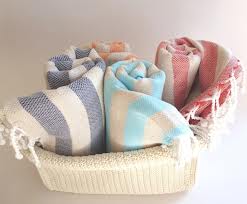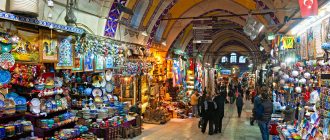Want to buy Turkish towels? Read on for facts and info to discover what makes the Turkish towel so special…
The Turkish towel is considered to be a very important part of the social life of the people of Turkey. Today Turkish towels have acquired worldwide recognition as being of spectacular quality and having a rich cultural heritage.
Turkish towels are basic bath towels that have a standard measurement of 90 cm by 110 cm. Originally the materials used to make these towels were high grade cotton and linen. In the eighteenth century the Turks evolved a new technique which used a looped pile section smack in the center of the towel.
Although Turkish towels are widely used today, they were originally created for a very specific purpose. The Turks had a unique marriage custom that had to do with a ceremonial bath for the bride about to get married. This bath would be conducted just before the big day. It would be repeated at other important occasions in the bride’s life.
An interesting thing to note is that according to the Turkish tradition they have their toilets and bathrooms separately constructed. The bathrooms were known as “hamams” and would have a complete set of special Turkish towels in them. Even today you will find people to have these complete sets of Turkish towels, which consist of dedicated towels for the head, shoulders and hips. Since the Turks had very special baths, this tradition went hand in hand with the concept of bathing as was understood and practiced by the Turks.
If it weren’t for the Ottoman intervention the towel would not have been anything other than a drab bath accessory. However, with the advent of the Ottomans into Turkey, towels went through a revolution of design as new styles and fancy weaving techniques were introduced. The Ottomans were exceptionally skilled in carpet weaving and they transferred those skills to towels to produce an exotic variety of Turkish towels.
What made Ottoman style towels different? Basically the Ottomans used 2/2-twill weave construction that provided the towels with extra-warp loop pile. This created a unique towel which had loops and piles of threads that would be standing up on the surface of the cloth.
In fact the towels that are used all over the world today were first woven in Bursa back in the 18th century. Many different techniques were evolved over time and the local term used for towels was Havly in Turkey. The single most important feature that contributed to the success of Turkish towels was the fact that they would be meticulously woven by hand. A single weaver would only be able to produce a maximum of 4 towels in a day, which made them exclusive items.
The history of Turkish towels seems to connect it with the practice of velvet weaving which was initiated in Bursa. By the 18th century Bursa had become the textile center of the nation. Initially the towels would bewoven using handlooms. The towels woven on Black handlooms were considered to be the most exclusive of all. With the passage of time the Turkish towel industry grew to new heights and by the 19th century Turkish towels were being exported to Iran, Syria, Egypt, India and Balkan countries.





